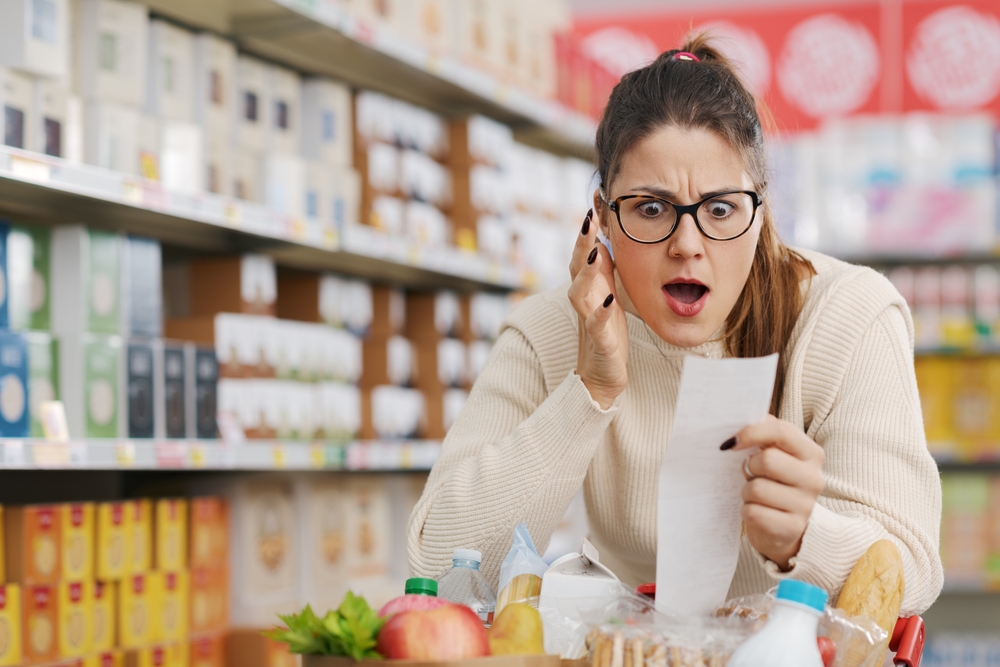
Image source: shutterstock.com
Many shoppers walk into their local supermarket believing they know exactly where to find the best deals, but the truth is that stores are designed to influence your spending more than you realize. Certain areas encourage customers to pick convenience over value, and some price differences are subtle enough to go unnoticed. When you understand which store sections often inflate prices, you can make smarter choices and stretch your grocery budget much further. These insights help you recognize when you are paying extra simply for placement, packaging, or convenience rather than true quality. Becoming aware of these patterns makes every trip to the store more intentional, predictable, and wallet friendly.
1. The Prepared Foods Section
One of the most expensive supermarket sections is the prepared foods area, where convenience comes at a steep markup. Items like pre made sandwiches, hot meals, and salad bar options are often priced far higher than their ingredients. Shoppers often pay for labor and packaging without realizing how quickly these costs add up. While the items may be fresh, the value usually falls short compared to DIY alternatives. Planning ahead with simple meal prep cuts unnecessary spending.
2. The Produce Section’s Pre-Cut Items
Precut fruits and vegetables are among the most convenient yet costly items in the store sections dedicated to produce. The price increases because stores charge for labor, packaging, and shorter shelf life. While these options save time, the cost per ounce can be two to four times higher. Shoppers may overlook the difference because pre cut items look appealing and ready to use. Buying whole produce and cutting it at home protects your budget.
3. The Bakery Display at the Front
Fresh bakery displays near the entrance are designed to attract shoppers with pleasant smells and eye-catching sweets. These store sections typically feature premium prices that rely on impulse purchases. Shoppers often pay more for items that look artisanal even when they are factory produced. The placement encourages quick decisions driven by taste rather than value. Buying from the packaged bread aisle often offers similar quality for less.
4. The Cleaning Supplies Aisle
Cleaning products are some of the most heavily marked up items in many store sections. Shoppers often choose brand names out of habit, even when generic or concentrated formulas offer equal performance. Marketing, packaging, and false promises of superior results keep prices high. Retailers place these products at eye level to boost profits. Switching to store brands or making basic cleaning solutions at home can drastically reduce spending.
5. The Deli Counter
Many shoppers assume the deli counter offers better deals, but this is one of the supermarket sections where prices quietly inflate. Sliced meats and cheeses often cost more per pound than prepackaged options. The labor involved in slicing and weighing adds to the markup. People also tend to buy more than planned because the process feels more personal. Checking unit prices helps determine whether the deli truly offers value.
6. The Health and Beauty Section
Personal care items like shampoo, toothpaste, and skincare products are among the highest margin store sections. Retailers take advantage of brand loyalty and lack of comparison shopping in this area. Many shoppers assume grocery stores offer fair pricing, but pharmacies and online retailers frequently charge less. Stores also place these products near premium items to encourage upselling. Comparing prices before buying helps prevent overspending.
7. The Frozen Dinner Aisle
Frozen meals offer convenience but are among the priciest options in the frozen supermarket sections. The cost includes processing, branding, and packaging rather than high quality ingredients. While they save time, the price per serving is often higher than cooking simple meals at home. Shoppers may rely on them during busy weeks without realizing the long-term cost impact. Choosing frozen vegetables and proteins instead offers better value.
8. The Beverage Section
Bottled drinks, from flavored waters to specialty teas, often carry significant markups. These store sections are designed to encourage impulse purchases, especially when the packaging looks trendy or functional. Shoppers sometimes overlook how quickly the cost of single serve beverages adds up. Buying larger containers or sticking to water reduces unnecessary spending. This small shift makes a meaningful difference over time.
9. The Organic and Specialty Food Aisle
Organic products can be worth the investment, but not always. These store sections often include items that are labeled organic but do not offer significant benefits or nutritional differences from regular versions. Prices rise due to branding, packaging, and targeted marketing. Shoppers sometimes assume everything in this aisle is superior without verifying. Checking certification labels and comparing prices across aisles helps determine real value.
Paying Attention Helps You Shop Smarter
When shoppers learn which supermarket sections are designed to boost spending, they can make more mindful choices that protect their budgets. Awareness reduces impulse buys, encourages comparison shopping, and reveals where convenience may cost more than it benefits. Smart shopping is all about knowing when to splurge and when to steer clear of costly placement tricks. The more informed you become, the easier it is to navigate the grocery store with confidence and control. Saving money starts with understanding the strategies behind the aisles.
Which store sections surprise you the most when it comes to hidden markups, and how do you avoid overspending? Share your tips in the comments.
What to Read Next…
- 10 Store Aisles That Cause the Most Buyer’s Remorse
- The Grocery Store Section Where Shrinkflation Is Happening Fastest
- 6 Supermarket Sections Where Prices Are Outpacing Inflation
- Why Shoppers Say the “Affordable” Aisles Are No Longer Affordable
- The Grocery Aisle That Shows Exactly How the Middle Class Disappeared
